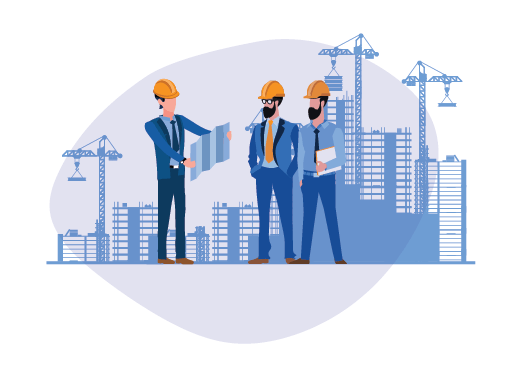The 4 Stages of Construction Project Management
When you’re managing a construction job there are certain objectives you should consider. You reach them in stages. Just like in any project, you accomplish it by breaking it down. The following are four steps you can take to organize a successful construction project management project.
Design
There are four parts to designing a construction project. It’s the responsibility of the project manager to make sure your design meets with building codes and other regulations.
1 The concept. What are the needs, goals and objectives of the project? You’ll be making decisions based on the size of the project, the site allocated for the build and the actual design of what your building. This is comprised of a list for each room or space under consideration, including all critical data.
2 The schematic design. This is a sketch that identifies all the various parts, materials, sizes, colors, textures, etc. It includes the floorplan, elevations, etc., even a site plan.
3 Develop the design. This requires research. What are the materials to use? What equipment will be needed? How much are the materials? You’ll be refining the original drawings from the previous stage now to reflect these decisions. Knowing local building codes and adhering to them will be important at this stage.
4 Get the contract documents together. These are the final drawing and construction specs. These will be used by outside contractors to bid on the job.
Preconstruction
Once the bids are accepted, but before ground is broken, you’ll have these three steps to work on.
1 Assign a project manager. Do this if it hasn’t already been determined. Sometimes a project manager is on board early and participates in the first stages of a project, while other times they aren’t hired until the design is complete.
2 Determine the rest of the personnel. Find a contract administrator: this is the person who help the project manager. A superintendent is needed now, as well, who keeps everything on schedule in terms of the materials, deliveries and equipment. They’re also on site to deal with construction activities. Finally, you want to have a field engineer, which is more an entry-level position to deal with paperwork.
3 Investigate the site. Check to see if anything needed. The site must be ready for the construction, which might mean dealing with environmental issues, such as the suitability of the soil for construction.
Procurement
You have people and you’ve planned for the construction and materials necessary to complete it. Now you must purchase those materials and equipment. This might be the responsibility of the general contractor or subcontractors, depending on the organization of the business doing the construction. This is the stage you’ll be working with purchase orders, which are used as an agreement between the buyer and the seller.
Construction
Finally, you’re ready for the build! But first you have a preconstruction meeting to deal with work hours, the storage of materials, quality control and site access. Then get everyone on site and set up.
You’ll need to create a schedule of payment and a process to deliver them. This information needs to be transparent, not only to meet financial obligations, but to maintain a happy and productive workforce and environment. Make sure your work orders are detailed enough to avoid misunderstandings between you and your contractors.
The last part of the project is after the construction is complete and the occupants move into or take ownership of the site. You must make sure all their requirements have been met, and usually provide a warranty period to make that arrangement official and binding.



